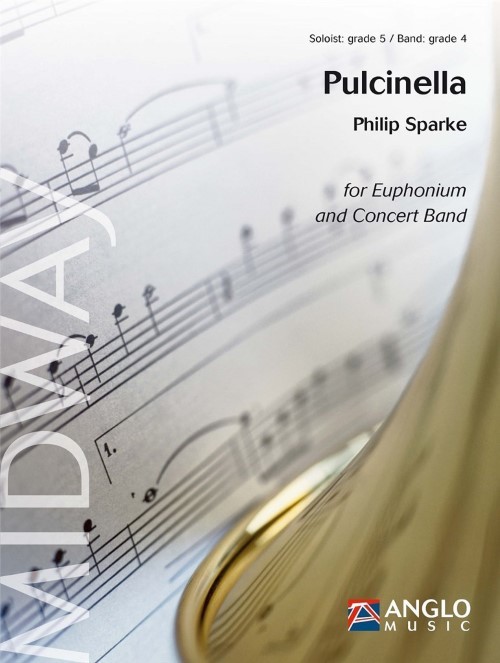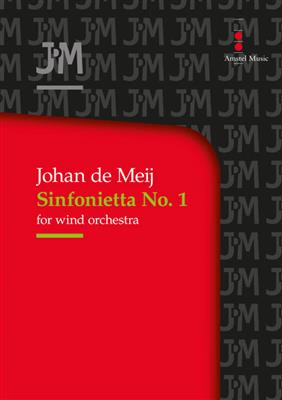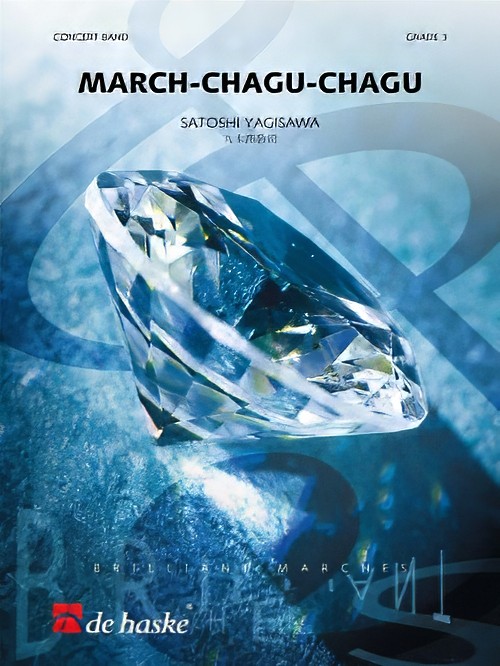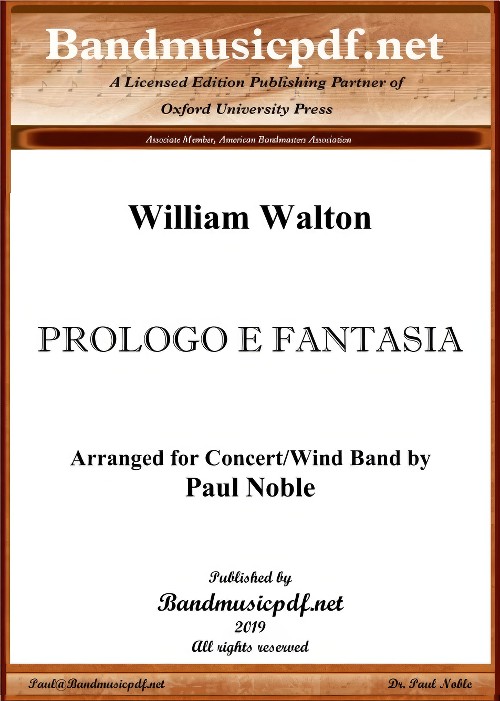Results
-
 £84.99
£84.99Saltus Hungaricus - László Zempléni
The second half of the 18th century, for the people of East Central Europe, was the time of the awakening of national consciousness. The leading force in the Hungarian enlightenment, the lesser nobility, also regarded as important the national character of the country's culture. A valuable kind of national music was the Hungarian dance music that flourished in the 18th century. The greater part of the repertoire naturally perpetuates the 'Hungarian-style' pieces from the previous centuries (appearing in foreign collections too described as hungaricus, ungaresca, saltus hungaricus or Ungarischer Tanz), but beside these we can encounter contemporary European dances and entertaining instrumental pieces in almost every style. The majority of the sources are collections compiled by non-professional musicians and intendedfor private music-making. In this work the composer uses melodies from the 18th-century Linus dance collection, in trioform, with harmonies and bass appropriate to that period. The musical fabric is rich in counterparts, the sound is mademore colourful with many kinds of percussion instruments. The register and rhythmic simplicity of the parts make thepieces easily playable even by music school pupils.
Estimated dispatch 7-14 working days
-
 £141.99
£141.99Pulcinella (Euphonium Solo with Concert Band - Score and Parts) - Sparke, Philip
Pulcinella was commissioned by the Taiwanese euphonium player Tzu-Hsiang Lin. Lin is a renowned soloist and teacher and a Besson Euphonium Artist. He teaches euphonium at Taipei National University of the Arts, National Taiwan University of Arts, Shih Chien University and National Kaohsiung Normal University. Lin gave the premiere of Pulcinella in both its concert band and brass band versions in January 2021. Pulcinella continues Sparke's series of euphonium solos named after characters of the Italian commedia dell'arte and opens with a long and expressive minor melody for the soloist over a brooding accompaniment. This is taken up briefly by the full band and is extended by the soloist after a change of key. A cadenza, accompanied by fragments of the main melody leads to a complete change of mood, tempo and tonality, introducing a Vivo section starting with a perky syncopated tune for the soloist. The band then uses elements of this new tune to introduce a change of key, where the soloist introduces a more lyrical second subject over a pulsing accompaniment. The band then takes this up and changes key to reintroduce the original Vivo melody, which leads to a short and acrobatic coda to bring the work to a spectacular close. Duration: 6.45
Estimated dispatch 7-14 working days
-
 £100.00
£100.00Early Light - Carolyn Bremer
Carolyn Bremer's brilliant showpiece for orchestra has already been a hit in this version for concert band by the composer. Based on our national anthem, which gives the piece its title as well as much of its musical content, Early Light is also tribute to baseball, the "national pastime." This exciting showpiece has just been added to the Texas UIL Prescribed Music List for festival/contest use. Duration: 5'30"
Estimated dispatch 12-14 working days
-
 £53.50
£53.50Fields of Sunflower - Russian Folk Song Medley - Keiichi Kurokawa
This is a wind band arrangement medley of three famous Russian folksongs: Korobeiniki, Troika, and Kalinka. Everyone in Japan has heard these melodies as they are used in elementary school music textbooks, the NHK (National Public Broadcasting Organization) TV program "Minnano Uta", and were popularized by the video game Tetris.Sunflower is the national flower of Russia.
Estimated dispatch 7-14 working days
-
 £120.40
£120.40Intermissions - Daniele Carnevali
This piece was commissioned by the organising committee of the "La Prime Luz 1812" national band contest, held in Bertiolo (Udine), as the compulsory piece for category A. It consists of three movements and, rated as a first international category or national excellence grade piece, it requires the appropriate variety of timbres and instrumentalists with the necessary skills. The themes, enhanced by the use of unusual tones and compound beats, are often broken, interrupted: hence the title of the piece, intermissions, meaning interruptions. The unifying element is the musical language that, through the use of artificial modes and fourths, seeks to create a balance between tensions of differing intensity and nature.
Estimated dispatch 7-14 working days
-
£56.50
Relics Of The Past - Sean O'Loughlin
As the title implies, here is a piece from popular composer Sean O'Loughlin that harkens back to ancient times. The minor mode gives the piece a seriousness that students will love. Relics of the Past was inspired by the composer's trip to Yosemite National Park with his family, where he was awed by the majestic, expansive views of the park. From Half Dome to Yosemite Falls to the giant Sequoia trees and more, Yosemite National Park embodies ancient beauty and conflict, reflected here in Relics of the Past. Beginning groups only need to use the first six notes that they learn to play this expressive, haunting piece.
Estimated dispatch 7-14 working days
-
 £229.99
£229.99Sinfonietta no. 1 - Johan de Meij
Sinfonietta No. 1 was originally written for brass band, commissioned by the Dutch National Championships 2011 in Groningen. It also served as the test piece for the Swiss National Championships 2011 in Montreux, Switzerland. In 2012, Johan de Meij created this version for wind orchestra.Unlike most of Johan de Meij's compositions, Sinfonietta No. 1 is an abstract, non-programmatic work. It consists of three movements, in which the thematic material of the opening measures - an upward fifth jump - returns in various shapes and forms throughout the piece. The slow middle section features solo passages by cello, English horn and bassoon, all starting with thesame fifth jump. The final movement presents an Elgar-like march theme, interspersed with quotes from the second movement, and ending with the opening theme of movement I.
Estimated dispatch 7-14 working days
-
£76.99
Intrada & Wilhelmus - John Blanken
John Blanken composed Intrada & Wilhelmus in 2002.The title speaks for itself. It's an introduction to the national anthem of The Netherlands; Wilhelmus. In this piece the national anthem is heared two times followed by a short postlude.
Estimated dispatch 7-14 working days
-
 £84.99
£84.99March-Chagu-Chagu (Concert Band - Score and Parts) - Yagisawa, Satoshi
This work was composed as ceremonial music, as part of a march medley for the participants' entry for the 71st National Sports Festival and the 16th National Disabled Personnel Sports Festival, held in Iwate Prefecture in 2016. The European premiere of this piece took place in December of that year, the composer guest conducting the Young Musicians from Fribourg, Switzerland. This work, fusing Japanese folk song with march music, will have wide appeal, like the sister work March-Bou-Shu. Duration: 3.00
Estimated dispatch 7-14 working days
-
 £150.00
£150.00Prologo e Fantasia (Concert Band - Score and Parts) - Walton, William - Noble, Paul
William Walton's last 'original' work of note was the Prologo e Fantasia in 1981-2, commissioned by Mstislav Rostropovitch and the National Symphony Orchestra in Washington D.C. It was first performed in London by Rostropovitch and the National Symphony Orchestra. The work consists of three sections. The first movement forms the Prologo, which is slightly reminiscent of the French Overture. The Fantasia opens briskly with characteristic Waltonian energy, and leads, after a climax, into the thematically connected final section Fuga finta (or 'make-believe fugue'). Note to conductors: orchestra performances of this work vary significantly, from a total length of just under five minutes in one performance to over six minutes and forty seconds in another. The audio presented with this arrangement is somewhat in the middle of the timings. So the metronomic markings may not necessarily be taken literally.
Estimated dispatch 7-14 working days
